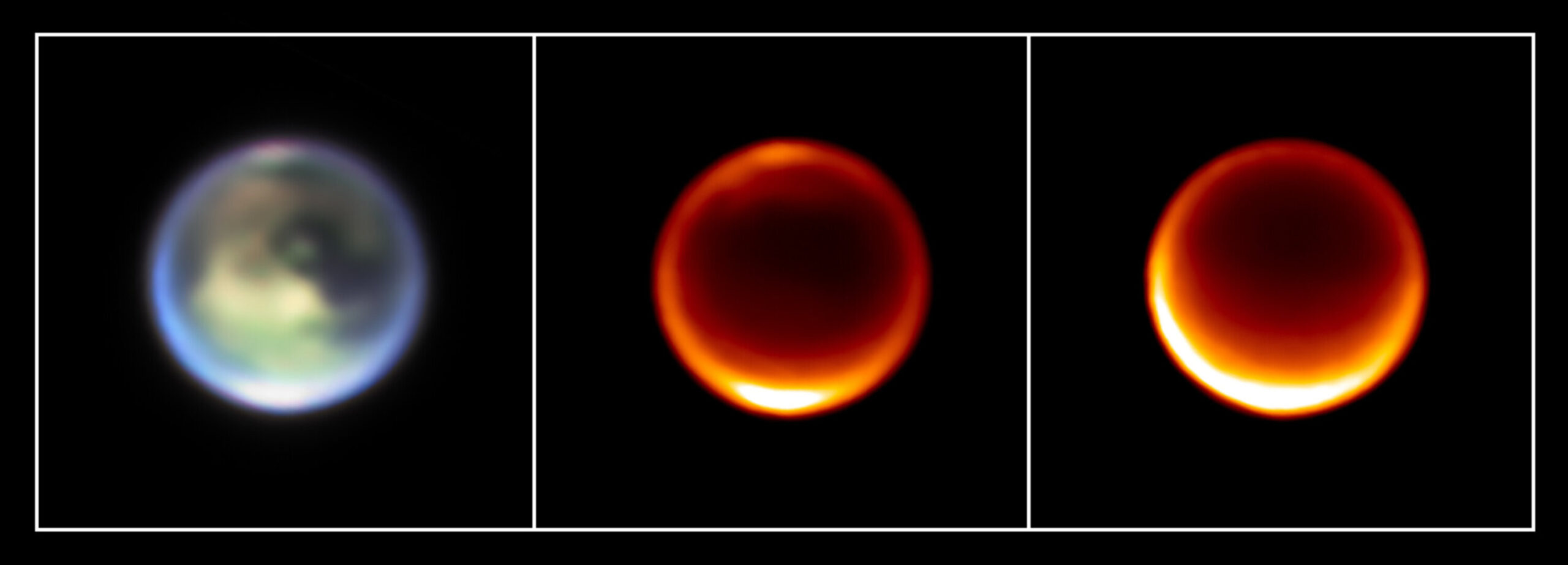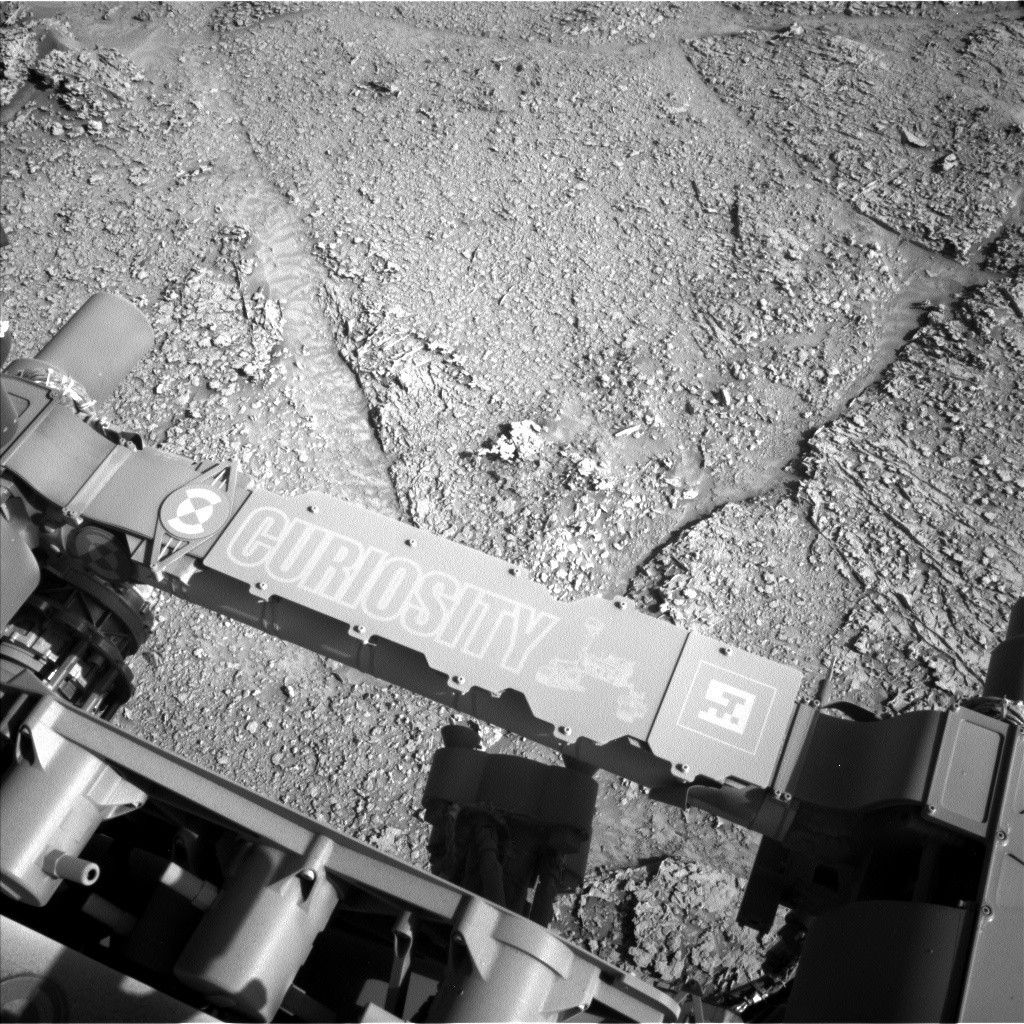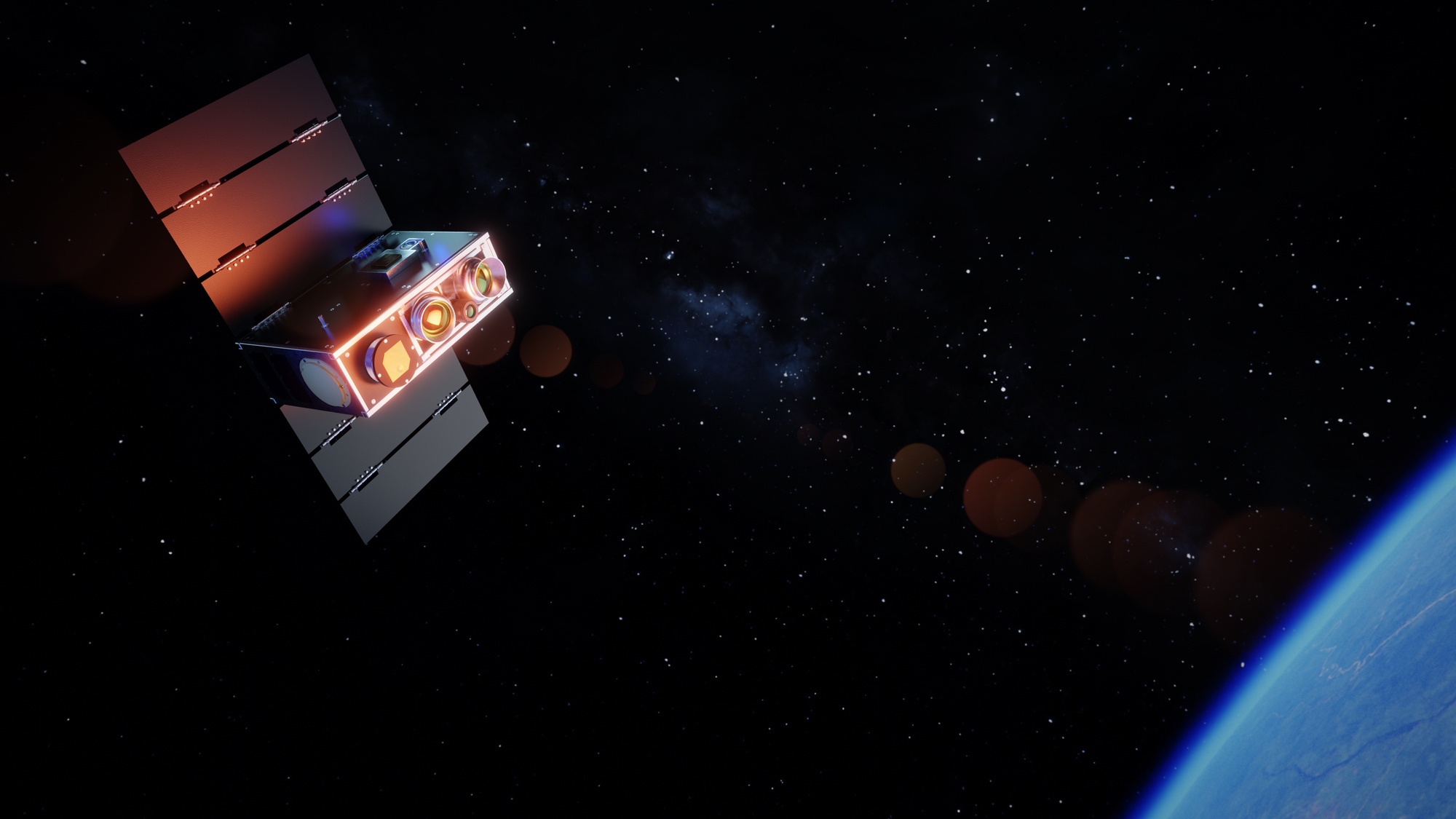Now Reading: Titan Reveals Dynamic Climate and Weather Patterns Similar to Earth
-
01
Titan Reveals Dynamic Climate and Weather Patterns Similar to Earth
Titan Reveals Dynamic Climate and Weather Patterns Similar to Earth


In the grand tapestry of our solar system, few places rival Titan, Saturn’s enigmatic moon, with its shrouded atmosphere and unique weather systems. Observations gathered by the James Webb Space Telescope (JWST) and the Keck II telescope have begun to reveal the hidden dynamics of Titan’s climate, shedding light on a world where a methane cycle reminiscent of Earth’s water cycle reigns supreme.
The northern hemisphere of Titan, currently basking in summer warmth, has unveiled a stirring spectacle: cloud convection sparked by the evaporation of methane from its myriad lakes and seas. On Earth, we regard clouds as harbingers of rain; similarly, Titan experiences a phenomenon where methane, evaporated from its icy surfaces, ascends to form clouds that occasionally unleash icy, oily rain back onto the solid landscape, a beautiful yet potentially hazardous dance of chemistry.
Lead author Conor Nixon from NASA’s Goddard Space Flight Center encapsulated this wonder, stating, “Titan is the only other place in our Solar System that has weather like Earth.” This is a bold assertion, as it invites us to draw parallels between two otherwise starkly different worlds. However, Titan’s atmospheric conditions—predominantly nitrogen with methane playing the role of the liquid medium—echo Earth’s own meteorological patterns in surprising ways.
Observational Highlights:
- The findings indicated that clouds in Titan’s northern latitudes are indeed rising to higher altitudes over time, a sign of dynamic atmospheric processes.
- That is the first demonstration of cloud convection in the northern hemisphere, which very important since most of the moon’s lakes are located here.
- The team used various infrared filters to explore multiple atmospheric layers, allowing them to estimate cloud altitudes, a feat made possible by both Webb and Keck observations.
Further enriching our understanding of Titan’s atmospheric chemistry are the revelations concerning the methyl radical (CH3), detected thanks to the capabilities of the JWST. This molecule, created when methane splits apart, serves as a linchpin in the complex web of organic processes occurring in Titan’s atmosphere. When sunlight and energetic electrons from Saturn’s magnetosphere collide with methane, they instigate a cascade of chemical reactions, generating a veritable soup of organic molecules.
Imagine being able to peer into an oven while a cake rises, rather than simply waiting for the final product—a delightful analogy offered by co-author Stefanie Milam. The emerging layers of Titan’s atmospheric chemistry offer insights not only into its current state but also into the potential for life and the processes that might have preceded our own planet’s emergence.
The Implications of Hydrocarbon Chemistry:
- As methane is broken down in the upper atmosphere, its byproducts may eventually rain down onto Titan’s surface, impacting its geological and chemical landscape.
- The ongoing loss of methane to space raises questions about the sustainability of Titan’s hydrocarbon cycle. Is there a source replenishing it from the interior, or are we watching a gradual transition toward a drier, less hospitable world?
- The parallels with Mars highlight a potential future for Titan should methane escape without replenishment—leading to a world stripped of its rich atmosphere and transformed into a desiccated realm of dust and dunes.
The observations of Titan’s atmosphere not only illuminate this particular moon’s weather but evoke questions that resonate deeply with our understanding of planetary science and astrobiology. The quest for knowledge doesn’t merely traverse the physical landscape of Titan; it propels us into the philosophical realm concerning the viability of life in extreme environments and the chemical precursors necessary for its genesis.
Stay Informed With the Latest & Most Important News
Previous Post
Next Post
-
 012024 in Review: Highlights from NASA in Silicon Valley
012024 in Review: Highlights from NASA in Silicon Valley -
 02Panasonic Leica Summilux DG 15mm f/1.7 ASPH review
02Panasonic Leica Summilux DG 15mm f/1.7 ASPH review -
 03How New NASA, India Earth Satellite NISAR Will See Earth
03How New NASA, India Earth Satellite NISAR Will See Earth -
 04And Thus Begins A New Year For Life On Earth
04And Thus Begins A New Year For Life On Earth -
 05Astronomy Activation Ambassadors: A New Era
05Astronomy Activation Ambassadors: A New Era -
06SpaceX launch surge helps set new global launch record in 2024
-
 07Space Force plans new ‘Futures Command’ amid pressure to speed up modernization
07Space Force plans new ‘Futures Command’ amid pressure to speed up modernization




















